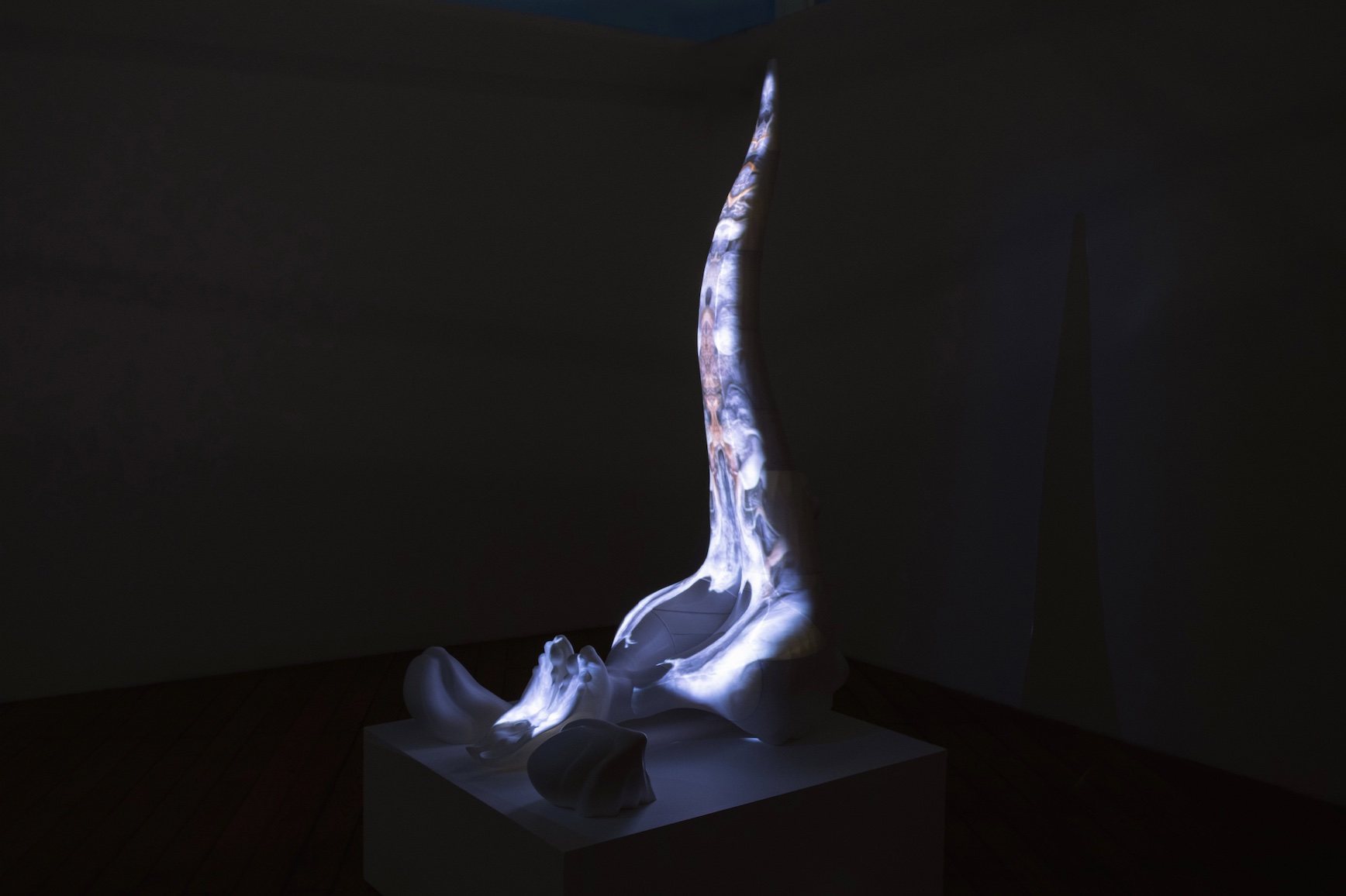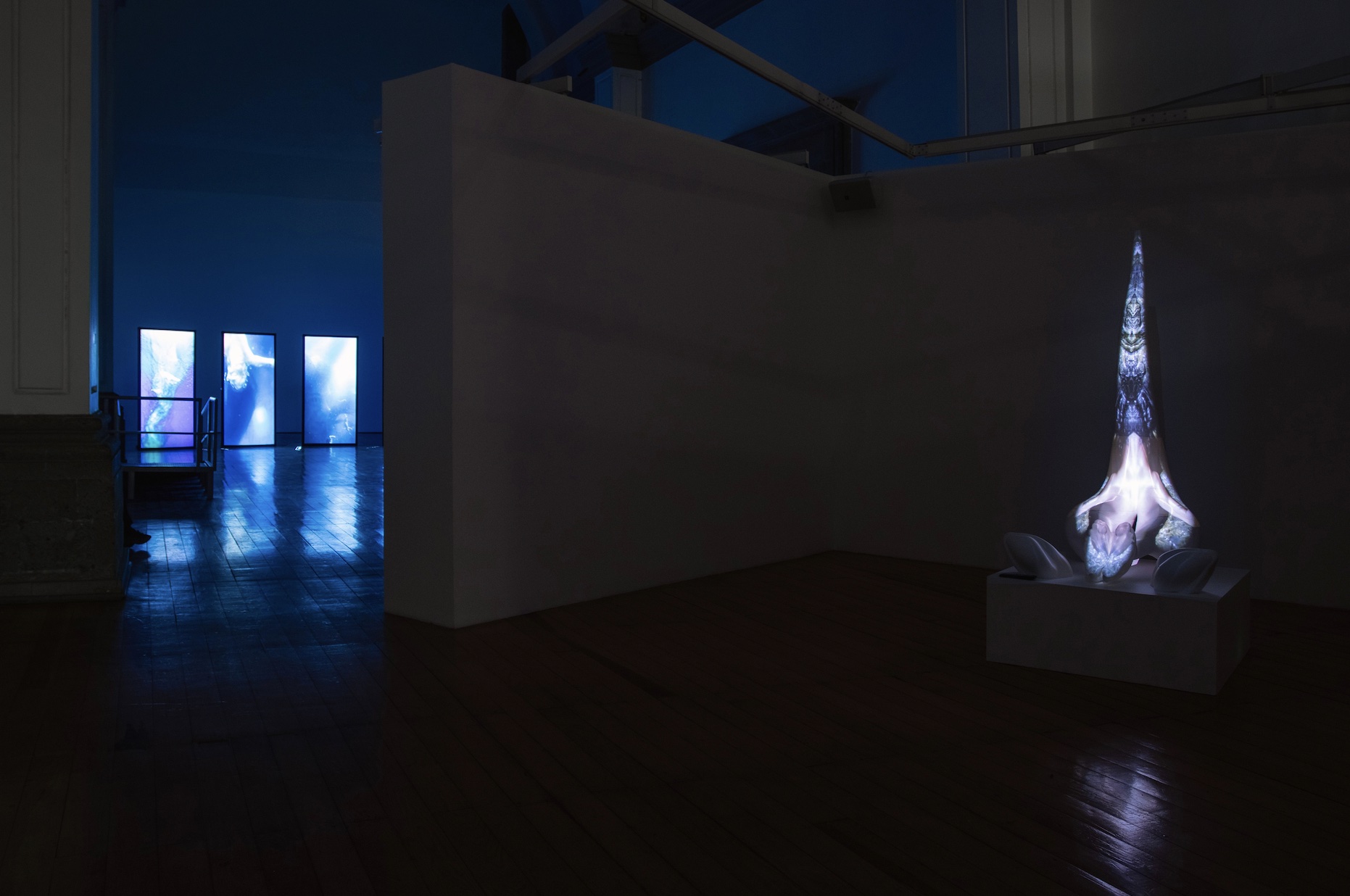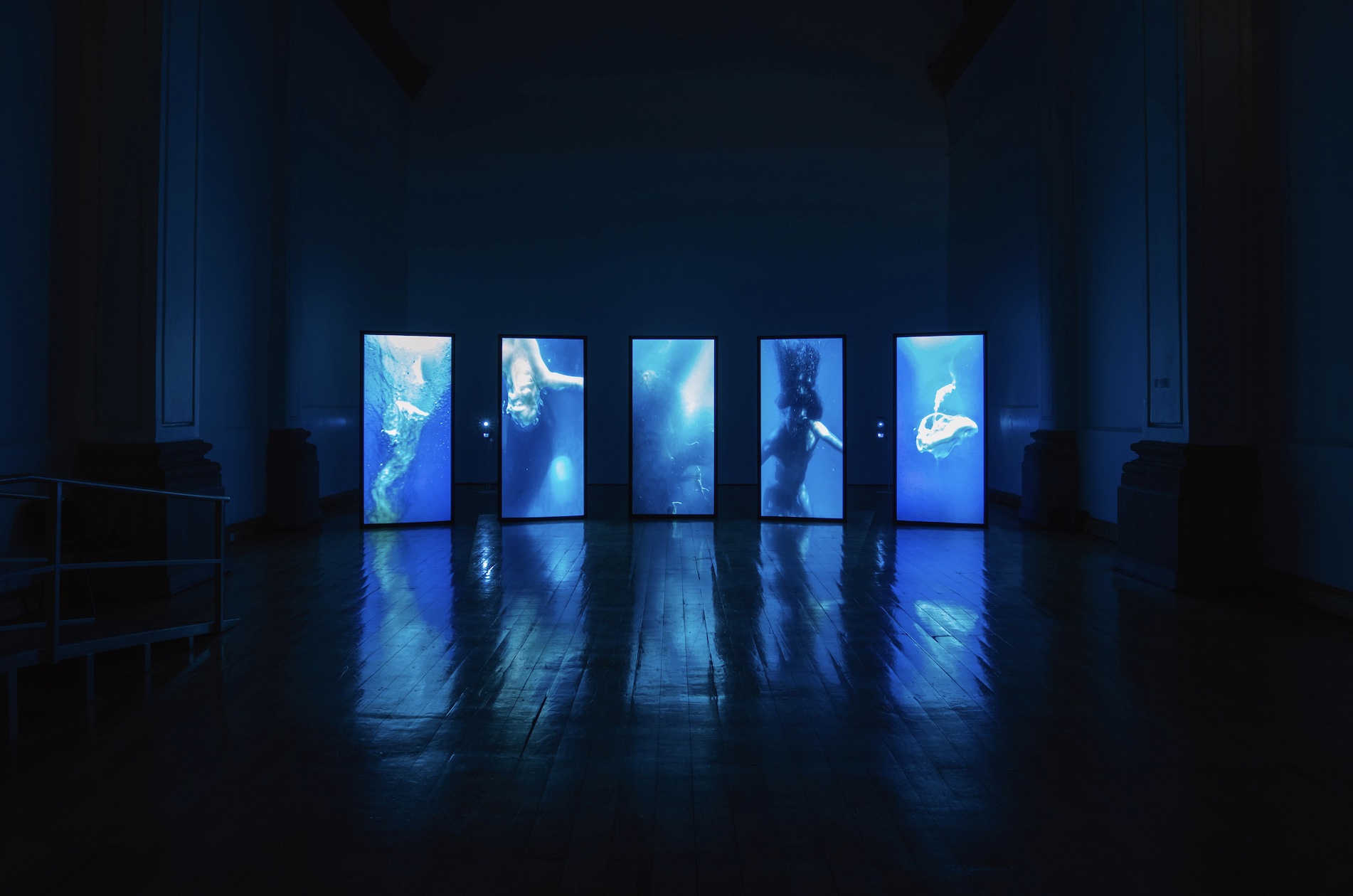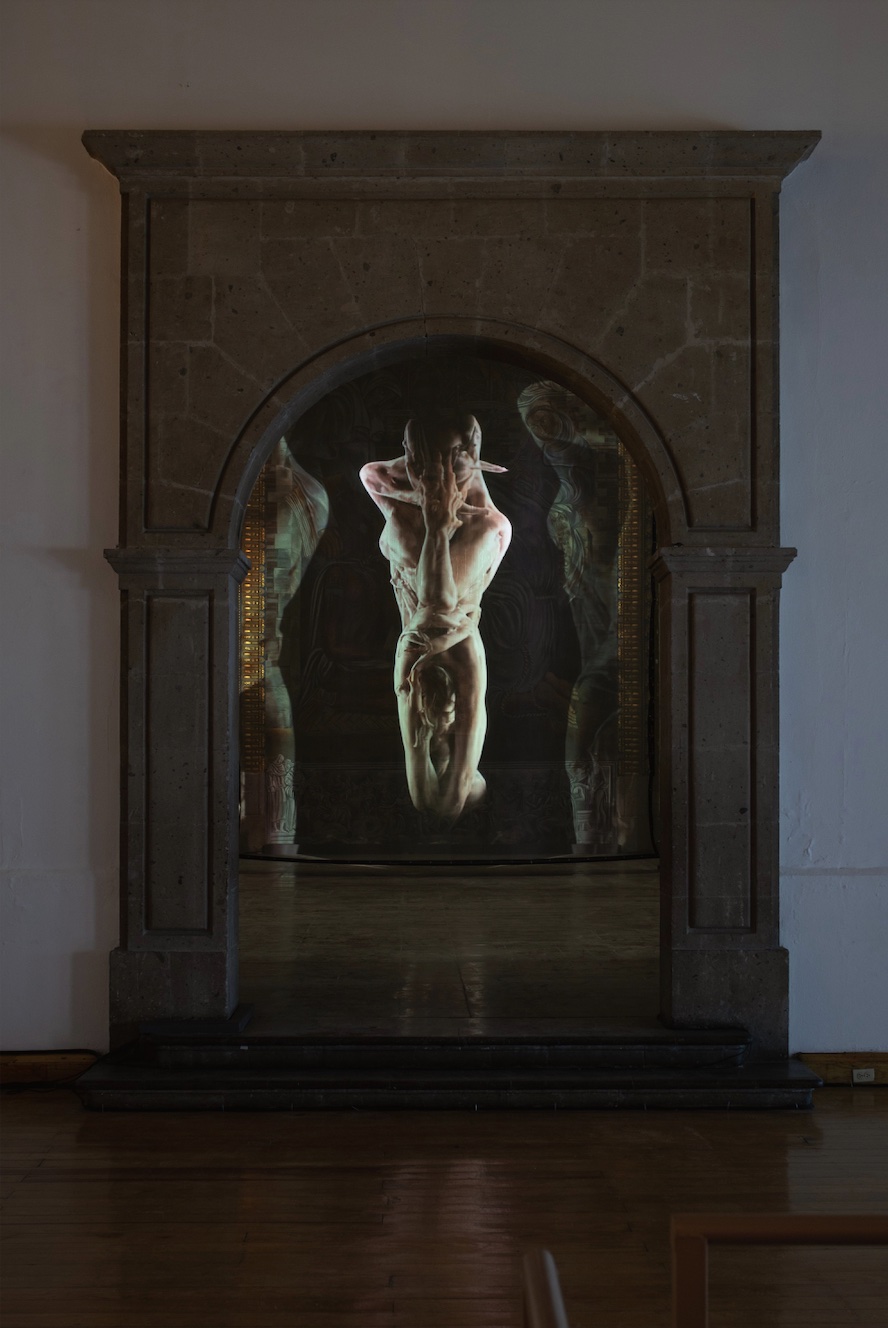
Review
The Sensuality of MUXX: Forces, Bodies, Techniques in LAA
by Sandra Sánchez
Reading time
7 min
NOTE A
MUXX: Trashumancia
Every driving force contains a history, Bodies as driving forces, The technique as the history of these forces, The technique as a producer of bodies that did not exist before.
Yes, the spontaneity of the force, but never as something isolated and individual (let us guard against the violence of an ideal body), but as part of an assemblage that mutates, but at the same time carries its history, its technique.
Nature not as something external, subject to the domain of someone who codes it as outside. Nature as movements, as assemblages that transfigure, of which we sometimes form part.
An exuberant sensuality, a body that allows the transit of fluids, organs, tentacles, organic matter. Being born or dying. Being born and dying. Totems and deities that do not condense a specific function, but rather allow passage across the surface.
*
MUXX: TRASHUMANCIA
Laboratorio Arte Alameda (LAA)
Curatorship: LAA Team
The word "transhumance" combines the Latin "trans," meaning "on the other side," with "humus," or "earth," and refers to nomadic grazing and the circulation of people and animals across large territories; a transient dwelling governed by the seasons, attentive to change and metamorphosis in natural systems.
MUXX adopts this term to reference its becoming between insurmountable, separate, or opposing territories. Thus, it charts its course between gender borders or between sentient and thinking beings, like humans, and those we suppose are unconscious and insensitive, like the earth. They also cross the limits between individual and collective memories, between ideological conceptions, and even between languages.
Each member of MUXX is touched by the other.
This is a proposal in which their bodies transmute, their desires merge, and their memories echo one another. The collective, composed of Lukas Avendaño, Eyibra, Óldo Erréve, and Nnux, uses performance, virtual reality, coding including artificial intelligence (AI), 3D design, and electronic music, among other technologies, to reflect on bodily, ethnic, racial, and gender diversity, as well as sexuality and the environment, from futuristic visions and timeless conceptions.
MUXX: Trashumancia is their first solo exhibition in our country.¹
NOTE B
In the preface to his book El cultivo de los gestos (Cactus, 2019), agronomist André Haudricourt (1911-1996) points out that “the history of technique is often summarized as the history of tools and manufactured objects. It is forgotten that driving forces also have a history; not only the forces external to humans, such as those used in mills or through the domestication of animals, but also the fact that humans as driving forces have a history, and a little-known and poorly studied history.”
Then, in Mentes paralelas. Descubrir la inteligencia de los materiales (Caja Negra, 2023), Laura Tripaldi (Italy, 1993) quotes: “the discovery of a new material necessarily coincides with the creation of a new technology, the production of a body that did not exist before.”
*
A force not as something static but as impulses that allow a successive series of movements in constant transformation.
The exhibition presents, through four pieces, a production of bodies and relationships with other bodies that appeal to the history of the Isthmus of Tehuantepec, practices in different temporalities of intersex human and non-human communities, movements and ways of life of the environment, climate, plants, and animals; the vibratile space, the enigma.
Everything overflows with great sensuality, even moments associated with death. When does the sensual happen? In the encounter between two or more bodies, where both, in a consensual manner, open to transformation–the effect of the material affectation of the encounter itself.
Bodies as driving forces, the technique as the history of these forces.

In Xtagabe’ñe (2024), a very tall totem rests in the middle of the room: could it be the tail of a mermaid or a snake, the pointed leaf of a plant, a timeless creature from a science fiction book? Xtagabe’ñe is part of the Zapotec myth “in which flowers become aquatic and court each other, sometimes changing gender in the narrative.”² White as a screen, it allows a two-channel video of organic shapes to pass over its skin. Here, the images stop supporting a reality to become a flow. The body not as a surface of inscription, but of transit. The sensuality of transit.
(((I kneel for a while, as my butoh teacher taught me–with the weight on my flexed toes. I pray for my sick cat, for my friend who cares for his mother and is tired, for the person I love most, for the one who gives me infinite curiosity, for my friends, for my dead, for myself; I do not pray to the deity, but to the movement itself. A pantheistic and loving feeling floods the room.)))

Amniosis (2024) is a five-channel projection generated with AI using “portraits of MUXX members filmed underwater transmuted with various creatures and species.³” It’s beautiful to see how the bodies mutate underwater, how the face is lost and takes another form, and then another, and then another. In different scale and speed, it reminds me of someone’s face when meeting their friends, their guardians, their enigmas. What I enjoy most is watching the movements generated by the transmuted bodies, which lose the “human” style. It gives me curiosity and desire; I would love to be able to move like that. The sensuality of movement.
The technique as a producer of bodies that did not exist before.
The Chapel of Dolores is one of the most significant spaces in the Exconvento de San Diego, which houses the Laboratorio Arte Alameda. It houses Federico Cantú’s mural Los informantes de Sahagún (1959). Arquímera (2024), a two-channel video on holographic mesh, hangs from the ceiling and covers (its porosity allows the background to be intuited) the informants. I read this gesture as a takeover of the colonial space to propose a different narrative: on its surface “a totemic avatar is created amalgamating images of MUXX, following a precise choreography, along with limbs and protuberances of various primal and pre-Christian deities, representing a multicultural agglomeration, capable of infinite transformation.⁴” The sensuality of what is own, which is always other.

This urgency (a symptom of various artistic productions such as Ileana Moreno, Ana Segovia, Julián Madero, Gonzalo García, Beth Frey, Sonia Bandura, Raquel Salgado, Lucía R., etc.) to become a different body, permeates the entire exhibition. I celebrate that MUXX does not resort to heroic narratives, romantic idealizations of the past, or identity narcissism to propose bodies, places, and weaves (inhabited, played, and rehearsed by themselves) where the sensuality of the encounter and of being affected (with multiple sensations) opens the possibility of a transit where one can share.
We are not facing the propaganda of a new myth or a fixed proposal, but rather the proposition of bodies whose technique and history welcome movement, which as a residue produces image, form, aesthetics, but never stops sustaining an ethic; modes of relationships.
Loved it.
Translated to English by Luis Sokol
1: This information is on the wall before entering the show. It is so precise that it is better to leave it intact than to paraphrase it. I read this text as part of the pieces, as an ethical map. The spaces between paragraphs are a subtle intervention of mine, thinking of you, reader.
2: Information from the data sheet.
3: Ibid.
4: Ibid.
Published on July 20 2024